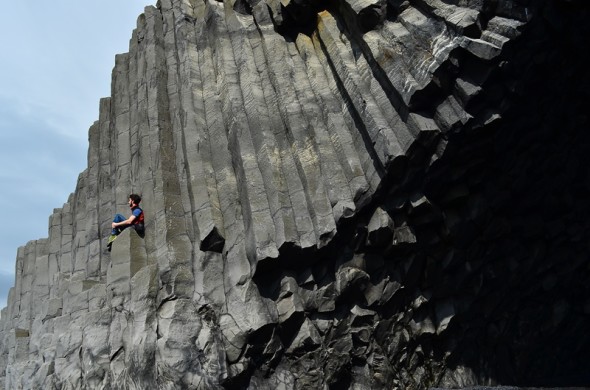Those of you that have not lived under a rock for the last fifteen years – or are massive Trump supporters – know that climate change is a big deal. The biggest force driving the increase in temperature is not Hillary Clinton or the mainstream media, but an increase in CO2 in the atmosphere. Like other greenhouse gases, CO2 blocks heat from escaping the atmosphere, which drives up the global temperature. While this means that in a few years we can still buy ice cream at A Domani in October without having to feel guilty, it will also cause sea levels to rise, some parts of the world will become dryer and it might start raining more in the Netherlands than it does already. Luckily, last June, the first evidence to reduce CO2 pollution was set in stone.

Dr. Matter and his colleagues found a way to literally set CO2 pollution in stone1. CO2 can form so-called “carbonate minerals”, a mix of minerals and CO2. When CO2 is bound to these minerals, such as iron or magnesium, CO2 is removed from the air. If this were to happen on a large scale, it would drastically reduce the impact of CO2 on the increase in the earth’s temperature. This is done by injecting CO2 into a certain type of rock, namely basaltic rocks. Conveniently, these rocks contain minerals that are needed to form carbonate minerals and they are one of the most abundant rocks on earth. Therefore, they are a very convenient place to store a greenhouse gas. Even better, the risk of leakage is very small, meaning that we don’t have to worry about the CO2 slowly leaking out. Speaking from experience, solidified gas is better than gas leaking out slowly.
Arguably the best part of this new method for reducing greenhouse gases is that it only takes two years for all the injected CO2 to be mineralized into the rock. If this system would also function as well on a bigger scale as it did in Matter’s project, we might be able to – literally – clear the air. This means that we don’t have to worry about getting worse weather than we already have, and who knows; maybe we can stop recycling and start showering longer without having to feel guilty about it.
Hilde Smeenk, Class of 2017, is a Cognitive Science and Life Science major from Wehl, The Netherlands.
- Matter, J. M., Stute, M., Snaebjornsdottir, S. O., Oelkers, E. H., Gislason, S. R., Aradottir, E. S., . . . Broecker, W. S. (2016). Rapid carbon mineralization for permanent disposal of anthropogenic carbon dioxide emissions. Science, 352(6291), 1312-1314. doi:10.1126/science.aad8132

